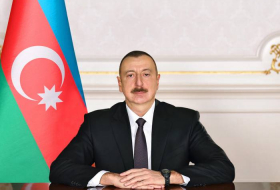The expert noted that Russian Gazprom recently held talks with Greek DEPA and Italian Edison companies on promoting the latter project.
According to Winrow, it seems that the EU would also not oppose the flow of Russian gas to Europe via an enlarged TAP as this would not be in breach of EU regulations concerning the Third Energy Package.
He went on to add that the Europeans have already shown that they are not opposed to more Russian gas imports with regard to the planned expansion of Nord Stream for Russian gas supplies to the EU.
Winrow also noted that for the foreseeable future, it is not clear what additional non-Russian gas (besides Azerbaijani gas) could be transported to Europe via TAP pipeline.
“Further exports from Azerbaijani gas fields or gas deliveries from Turkmenistan, northern Iraq or even Israel to Europe via Turkey and the Southern Gas Corridor are not likely in the near-medium term because of political problems, the lack of infrastructure, or delays in developing gas fields,” he said.
Meanwhile, according to the expert, there is certainly an ongoing competition between various countries in southeastern Europe concerning the possible route for the second leg of the Turkish Stream pipeline which would have a planned capacity of about 16 bcm per year.
He reminded that the Prime Minister of Bulgaria, Boiko Borissov, and the Serbian President, Aleksandr Vucic, have attended the 22nd World Petroleum Congress in Istanbul this week, where they have taken the opportunity to lobby for the routing of the second leg of Turkish Stream via their countries. Moreover, a few days earlier Hungary had also expressed a serious interest in hooking up with Turkish Stream via Serbia.
“Although this possible gas pipeline has been receiving a lot of publicity of late… and in spite of lobbying from Bulgaria, Serbia and Hungary, Moscow may still prefer one of the two options via Greece,” Winrow said, adding that in particular, using the upcoming open season of auctions to provide an extra 10 bcm per year to an enlarged TAP would be attractive to Gazprom as it would restrict the volume of non-Russian gas flowing to Europe along this key component of the Southern Gas Corridor.
Russia and Turkey signed an intergovernmental agreement on the implementation of the Turkish Stream project in October 2016. The agreement envisages construction of two strings of the main gas pipeline through the Black Sea, the capacity of each string being 15.75 billion cubic meters of gas.
One string is meant to supply gas directly to the Turkish market and the other for the supply of gas by transit through Turkey to Europe. Initially, Russia and Turkey planned to build four strings of the pipeline. Russian Gazprom began laying pipes for the Turkish Stream pipeline off the Russian Black Sea coast in early May 2017.
TAP is a part of the Southern Gas Corridor, which is one of the priority energy projects for the European Union. The project envisages transportation of gas from Azerbaijan's Shah Deniz Stage 2 to the EU countries. The pipeline will connect to the Trans Anatolian Natural Gas Pipeline (TANAP) on the Turkish-Greek border, run through Greece, Albania and the Adriatic Sea, before coming ashore in Italy’s south.
TAP will be 878 kilometers in length (Greece 550 kilometers, Albania 215 kilometers, Adriatic Sea 105 kilometers, and Italy 8 kilometers). TAP’s shareholding is comprised of BP (20 percent), SOCAR (20 percent), Snam S.p.A. (20 percent), Fluxys (19 percent), Enagás (16 percent) and Axpo (5 percent).
More about: #TAP #Turkish-stream
















































